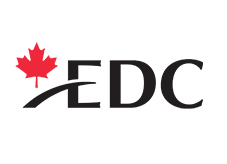Product positioning and positioning your startup: Customer validation stage
Before you launch your product, you need to establish not only your product positioning but also how you are positioning your startup in your market.
Product positioning is critical—and so is positioning your startup
Positioning is the single greatest influence on a customer’s buying decision. It creates an image in the mind of your target customer about your startup and your product in relation to the available alternatives. Your positioning has to let the customer know what you do, and what your product does for them.
For consumer and small business products, product positioning and branding matter more than company positioning. In business markets, the opposite is true.
Positioning your startup and product starts in the customer validation stage
For startups following Steve Blank’s Customer Development Model, the first steps of developing your company and product positioning take place during the customer validation stage. Consistency in your positioning is less critical during this stage—as you are not spending heavily on sales and marketing, you can easily make changes as you learn more about what direction your positioning should take.
Later, when you reach the customer creation stage, it will be time to refine your product positioning, as well as how you are positioning your startup. Keep the positioning consistent as you scale. At this stage, it can be helpful to engage the expertise of a public relations (PR) firm, and possibly an advertising agency.
Key points: Product positioning and positioning your startup
- Take a different approach when you consider your product positioning than when you think about how you are positioning your startup.
- Over time, as your startup matures and reaches bigger market segments, adapt your positioning to reflect the broader scope of what your startup does (i.e., the point of comparison of “why you are better” will evolve as you grow).
Your market type is key to your product positioning
In the customer validation stage, you need to identify the type of market in which you’ll operate (e.g., an existing market or a new one) and how your company is unique. Use what you learned in the customer discovery stage to guide this process.
First work on your product positioning. Your market type is key:
- Existing market: Focus on the attributes of your product that make it better than the competitors. Are you a premium product compared to the competition or a low-cost alternative? Are you the most efficient product or do you provide better customer service?
- New market: Highlight the problem you are solving for customers, rather than specific product attributes. (Plugging technical features will not be meaningful for customers not yet familiar with what this product does)
- Re-segmented (low-end or niche) market: Take a hybrid approach from the two market types above. Contrast your product with your competitors’ solutions and explain how you solve the problem in a new way
Positioning your startup effectively
When you have mapped out your product positioning, it’s time to work on positioning your startup. Address the following two customer questions:
- What does your company do for me?
- Why does your company exist and how is it different?
Effectively positioning your startup will answer these questions in customers’ minds.
Test your product positioning and the way you are positioning your startup
Test your product and company positioning on your early adopters and revise as need be. Your goal at the end of this process is to have two one-page summaries: one for your product positioning and one for how you are positioning your startup. These summaries will help you keep your marketing and sales messaging on track.
Understanding customer expectations
Keep in mind that your early adopters will have very different needs than your mainstream customers later on. Their customer expectations will differ so target your positioning (i.e., your comparators against the competition) based on what is relevant to them. Consider that your early adopters will make decisions based on your technology, whereas mainstream customers will focus on the solutions offered. By recognizing these differences, you can better calibrate how best to satisfy customers.
Product positioning and positioning your startup: Further resources
- Positioning: Creating an image of your product in your target customer’s mind
- Four types of market (market maturity): Where does your startup’s product belong?
- A strategy canvas: A tool for developing a differentiation strategy for technology products
- Defining your competitive edge: Product positioning in your target market
- Strategic planning: How product differentiation strategy depends on market type
- Product positioning and positioning your startup: Customer creation stage
- Crafting your value proposition (workbook)
Stages of venture development
References
Blank, S.G. (2005). The Four Steps to the Epiphany. Self-published: Cafepress.com.
Moore, G. (1999). Crossing the Chasm. (Revised ed.). New York: Harper Business.
Wiefels, P. (2002). The Chasm Companion. New York: Harper Business.

